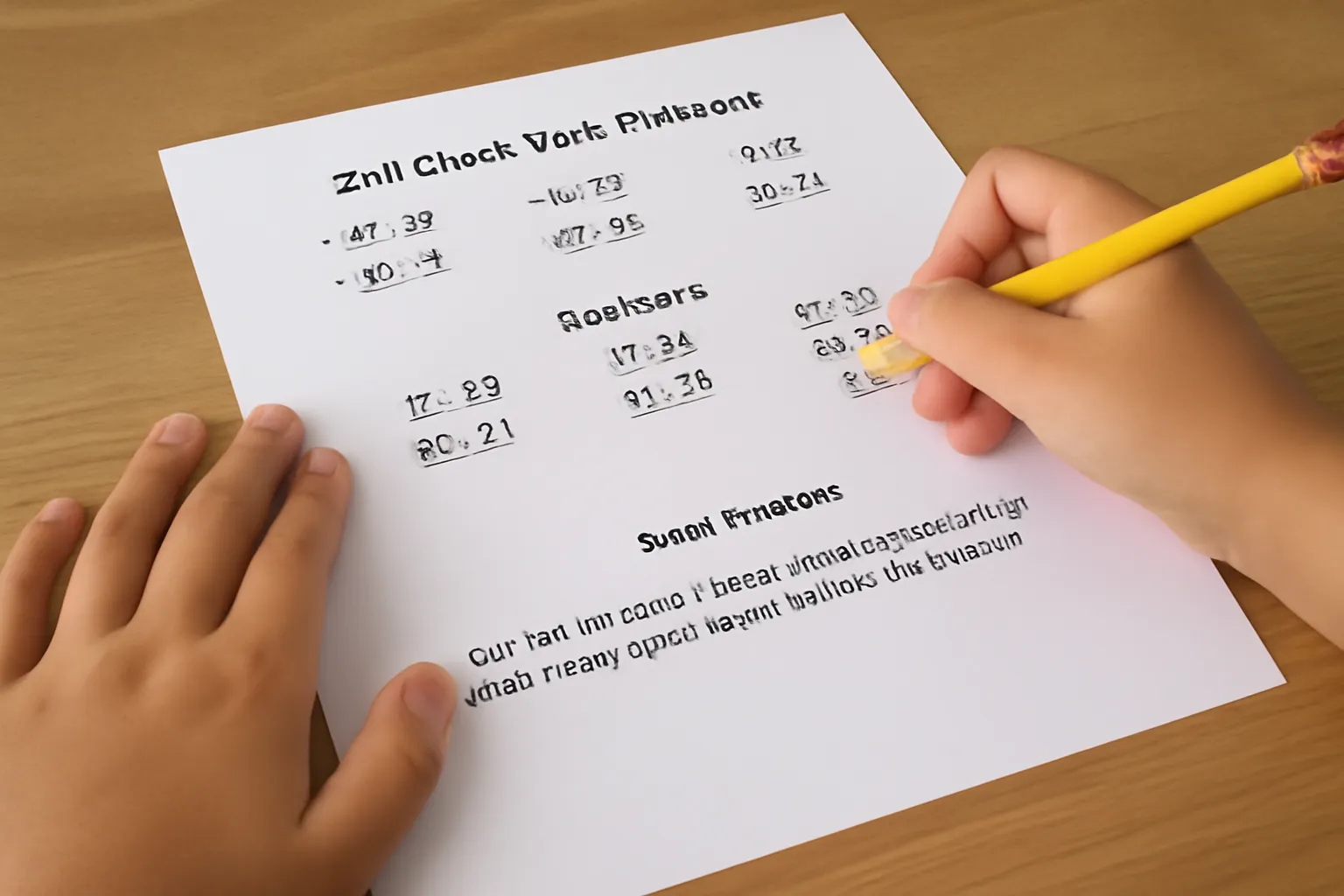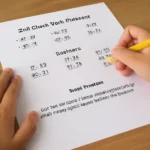Math is an essential part of every child’s education, especially in elementary school. For 2nd graders, math problems are designed to help them build a strong foundation in basic arithmetic, problem-solving, and logical thinking. Understanding the significance of math problems at this stage can set the groundwork for future learning and success. So, what are some of the most common and important types of math problems for 2nd-grade students?
This article will explore some of the critical areas of 2nd-grade math problems, focusing on basic operations, real-world applications, and the skills students develop through solving these problems. Whether you’re a parent, teacher, or student, understanding these concepts is key to mastering elementary math.
Wondering about the most common 2nd-grade math problems? Dive into our guide to understand how these problems help children build a strong math foundation, from subtraction to real-world applications.
Understanding Basic Arithmetic: Subtraction and Addition
One of the core components of 2nd-grade math is the focus on simple arithmetic operations such as addition and subtraction. These foundational skills are critical as they lay the groundwork for more complex operations in future grades. At this stage, students are expected to learn strategies that will enable them to solve both single and double-digit addition and subtraction problems.
Key Concepts in Addition and Subtraction
-
Simple Addition and Subtraction: Students practice adding and subtracting numbers up to 100, gradually increasing the complexity. For instance, problems like 47 + 39 or 72 – 29 are common at this level.
-
Carrying and Borrowing: Students begin learning how to carry over numbers in addition (e.g., 47 + 39 = 86) and borrow when subtracting (e.g., 72 – 29 = 43). These skills are critical to understanding more advanced arithmetic.
-
Word Problems: Math word problems that involve real-world scenarios are common. A typical 2nd-grade problem might be: “If you have 12 apples and you give 5 away, how many apples do you have left?”
By practicing these types of problems, students not only improve their calculation abilities but also develop critical thinking and problem-solving skills. For example, when solving word problems, they learn to read carefully, identify key information, and apply the appropriate arithmetic operation to solve the problem.
Real-Life Applications
Math problems in the second grade often relate to everyday scenarios. For example, students may encounter situations where they need to calculate how much change they would get from a purchase, or how many total items are in a set if they have a few different groups. These types of problems help students see the practical value of math in their daily lives.
Learn More About 2nd Grade Math
Developing Mental Math Skills: Importance of Speed and Accuracy
In addition to performing calculations, 2nd-grade students work on improving their mental math abilities. Speed and accuracy are essential when solving arithmetic problems, especially when students are expected to complete math problems on time.
The Role of Mental Math
-
Quick Calculations: Teachers often encourage students to solve problems quickly in their heads, such as adding 10 to a number or multiplying by 2. This not only improves their confidence but also makes them more efficient when dealing with math problems.
-
Practice with Flashcards: Flashcards are a common tool used to help students quickly recall basic math facts like addition, subtraction, and multiplication. The goal is to help them recognize patterns and improve recall time.
-
Using Patterns and Relationships: Students also begin to recognize patterns in numbers (e.g., adding 2 or 5 each time) or how subtraction relates to addition. By leveraging these patterns, students become more confident in their ability to solve problems quickly.
Teaching Strategies
To enhance mental math skills, teachers may use strategies like games and interactive activities that involve quick thinking. For example, speed drills where students race to solve problems in a set amount of time encourage friendly competition while reinforcing arithmetic skills.
Explore More Techniques for Math Speed
Word Problems: Connecting Math to the Real World
Word problems become more complex in 2nd grade, requiring students to not only solve equations but also apply their math knowledge to solve practical scenarios. These problems challenge students to read carefully, break down the problem into manageable parts, and apply the appropriate math operation.
Key Characteristics of Word Problems
-
Identifying the Operation: The most challenging aspect of word problems is figuring out which math operation to use (addition, subtraction, multiplication, etc.). For example, a problem may read: “There are 14 birds in a tree. 7 fly away. How many birds are left?” This question requires subtraction.
-
Understanding Context: Some word problems may involve a story, such as sharing items equally among a group or calculating time. This helps students understand that math can solve real-life problems.
-
Multistep Problems: By the end of 2nd grade, students start to encounter problems that require more than one step. For example: “A farmer has 12 apples. He buys 5 more. How many apples does he have now? Then he gives 3 apples to his friend. How many apples does he have left?”
Benefits of Word Problems
Word problems teach valuable life skills. They help students develop critical thinking, improve reading comprehension, and learn how to apply abstract concepts in concrete ways. By encountering different problem types, students also become better at identifying patterns in the real world that can be solved with math.
Find More Word Problem Examples Here
Conclusion
In conclusion, 2nd-grade math problems play a vital role in a student’s academic journey. By focusing on basic arithmetic, mental math skills, and real-world applications, these problems help students develop essential skills that will serve them throughout their education. Encouraging a strong foundation in these areas ensures that students are not only prepared for more complex math problems in the future but are also equipped with practical skills that will benefit them in everyday situations.
Remember, math is not just about numbers—it’s about developing problem-solving abilities, critical thinking, and a love for learning that lasts a lifetime.






